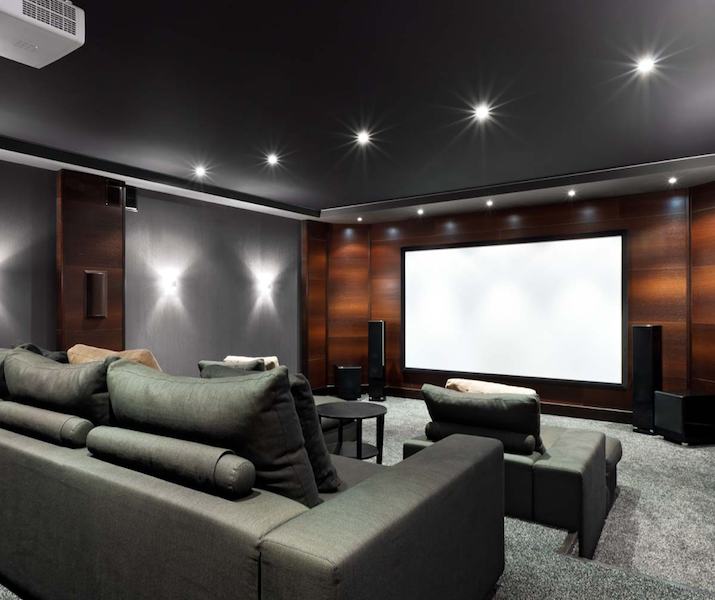To create a space that is perfect for movie or television enjoyment, you have to think carefully about every element—the projector, seats, acoustics, etc. Today, we’re going to discuss one of the most important aspects of a home theater system: the screen. To learn how to choose the best screen for the theater in your Colleyville, TX home, read on.
Step 1: Assess the Space
Your room will have a big impact on the type of screen you purchase. When looking at the space you’re going to convert into a home theater, there are several considerations to keep in mind:
- Shape: Most home theaters are rectangular for a reason. A long, deep room provides better viewing angles and a longer throw distance for your projector, which in turn allows you to have a larger screen. If your theater is shaped like a square, it will likely impact how large of a screen you can fit into the room while still giving the audience a comfortable view.
- Size: The larger the theater, the more space there is for seating and a bigger screen. Keep in mind that just because you have a certain amount of space on one wall doesn’t mean that you can buy a screen exactly that large. Depending on the room, you may need to put A/V equipment on either side of the projector, plus you don’t want a screen that is so big that the movie-watchers have to crane their necks from side to side.
- Lighting: Screen manufacturers now provide different materials that are designed to optimize visual quality based on how much light is in the room. For traditional movie theaters without any windows, your best bet is to go with a white screen, but if you do have ambient light in the room, you should consider a gray screen. Darker screens will block out light that isn’t coming from the projector so that you don’t have a washed out image.
SEE MORE: 5 Design Tips for Your Home Theater System
Step 2: Decide on Style
When it comes to screen styles, you’ve got two main options. First, choose whether you want a screen that is fixed in place at all times or one that retracts into the ceiling when not in use. With traditional home theaters, most homeowners opt for fixed placement, but if your theater is more of a media room with multiple purposes, a retractable style is worth considering.
The second choice you need to make is the frame style. You can get a regular, flat frame, or you can install a curved frame. Just like curved TVs, curved frames may provide a better viewing angle and help dispel ambient light. However, you’re not likely to find a retractable curved frame, and if you have a lot of theater seats, the curved style might impact visual quality for the fringe seats.
: Creation of dynamic property EasyBlogSocialButtonExternal::$post is deprecated in




